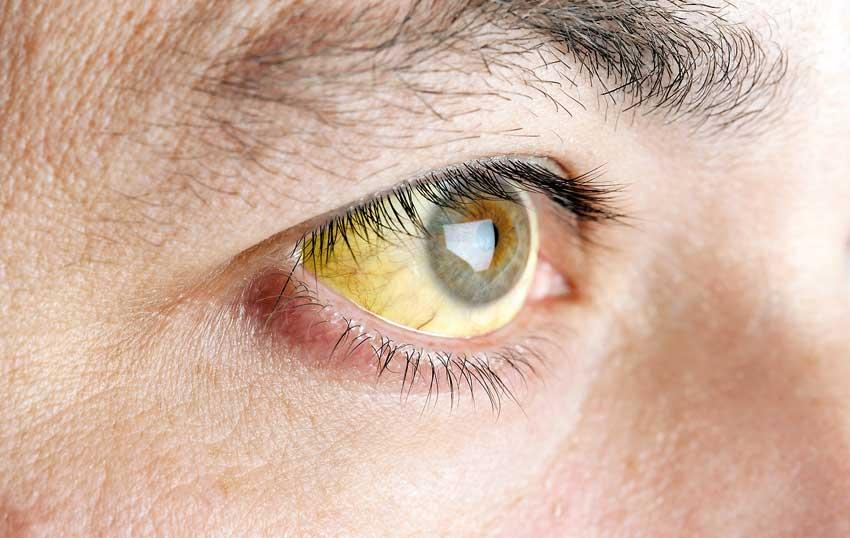24 Jul 2020 - {{hitsCtrl.values.hits}}

Jaundice - a common symptom in Hepatitis patients
 During a time where COVID-19 is winning the limelight of 2020 and all of us are concerned about the preventive measures taken against it, there are some opportunistic evil-doers behind the walls trying to get advantage of the ignorance of our society in other potential epidemics. Hepatitis virus is one of them. On World Hepatitis Day (July 28) we call on people from across the world to take action and raise awareness to find the “missing millions”- the set of asymptomatic careers who are unaware of their potential in spreading the disease in the community.
During a time where COVID-19 is winning the limelight of 2020 and all of us are concerned about the preventive measures taken against it, there are some opportunistic evil-doers behind the walls trying to get advantage of the ignorance of our society in other potential epidemics. Hepatitis virus is one of them. On World Hepatitis Day (July 28) we call on people from across the world to take action and raise awareness to find the “missing millions”- the set of asymptomatic careers who are unaware of their potential in spreading the disease in the community.
Hepatitis, defined as inflammation of the liver, is usually caused by a range of viruses namely Hepatitis A,B,C, D and E but certain infections like leptospirosis, inflammatory agents like alcohol and toxic substances, autoimmune diseases can also result in it.
“Why we need to worry about this condition is because some of the scenarios may resolve within days to weeks without any complications where some may end up in scarring (fibrosis), cirrhosis and liver cancer. In addition to the burden of the illness it can lead to potential out breaks and epidemic spread” says Dr Sumudu Bandaranayake, Consultant Physician, Teaching Hospital, Kurunegala.
Hepatitis A
Caused by Hepatitis A virus, presents in faeces of infected individuals and transmitted through contaminated food and water. In fact, its one of the main culprits of food-borne infections where waterborne outbreaks, though infrequent, are usually associated with sewage-contaminated or inadequately treated water. People in developing countries like ours with poor hygienic practices are more prone to this strain, but its mild and self limiting nature results (can result in debilitating symptoms in certain affected individuals) in full recovery of most of the individuals providing life-long immunity unlike the strains B and C which can result in chronic liver disease.
The diagnosis is made by detecting HAV-specific Immunoglobulin G (IgM) antibodies in blood.
Hepatitis B
This strain which is transmitted through infected blood and blood products, semen (sexual transmission) and body fluids can effectively be prevented by Hepatitis B vaccine. The transmission can also occur through infected mothers to newborns during birth. Health care professionals are at a higher risk of contracting this through accidental needle stick injuries when taking care of Hepatitis B infected patients where drugs addicts who are sharing needles are also at risk. Additionally its a well-know fact that homosexuals are highly susceptible for Hep B, C and D owing to unprotected sexual practices.
Diagnosis of acute hepatitis is made by the presence of HBsAg and HBcAg. During the initial phase, patients are also seropositive for hepatitis B e antigen (HBeAg).HBsAg for at least 6 months is supportive of chronic hepatitis B and persisting HBsAg is the principal marker of risk for developing chronic liver disease and liver cancer later in life.
Hepatitis C
This transmits similar to Hepatitis B virus and testing for anti-HCV antibodies identifies people who have got infected by HCV. If the test is positive for anti-HCV antibodies, a nucleic acid test for HCV ribonucleic acid (RNA) will confirm chronic infection.
Hepatitis D
Hepatitis D virus needs the presence of Hepatitis B virus to survive. In fact those who are infected by Hepatitis D almost all the time have got infected by the B strain where this dual infection is known to have a poor prognosis. Although this strain itself doesn’t have a vaccine against it, Hepatitis B vaccine provides the necessary protection.
HDV infection is diagnosed by high titres of Immunoglobulin G (IgG) and Immunoglobulin M (IgM), anti-HDVand confirmed by HDV RNA in serum.
Hepatitis E
Being a food and water borne disease similar to hepatitis A, this strain is mostly seen in developing countries, often resulting in out-breaks and epidemics. The definitive diagnosis of hepatitis E infection is based on the detection of specific IgM antibodies to the virus in blood.
Although vaccines have been developed against Hepatitis E, they are not widely available.
“When it comes to strains A and E, the question is how this virus can survive in the chains of food preparation and various other chemical and thermal measures to kill the pathogenic agents. Yes, the organisms do have the potential in surviving the heat and acidic or alkaline environments thanks to their biochemical and organic composition” highlights Dr Bandaranayake.
Presentation and treatment
Symptoms of Hepatitis include fever, malaise, loss of appetite, diarrhea, nausea, abdominal discomfort, dark-colored urine and jaundice (yellowish discoloration of skin and eyes). Severity of these symptoms vary depending on various factors andits better to seek for medical advice soon in order to prevent possible complications. Treatment of hepatitis varies from symptomatic management to liver transplantation depending on the strain, severity and complications.
“However the take home message is to be aware of the disease and take necessary preventive measures to stay away from the viruses by following safe sound food hygiene and in sanitary care as prevention is always better than the cure since cure is not guaranteed when it comes to conditions like these with a wide array of possibilities affecting the survival,” Dr Bandaranayake concludes.
21 Dec 2024 10 minute ago
21 Dec 2024 6 hours ago
21 Dec 2024 8 hours ago
21 Dec 2024 21 Dec 2024
21 Dec 2024 21 Dec 2024